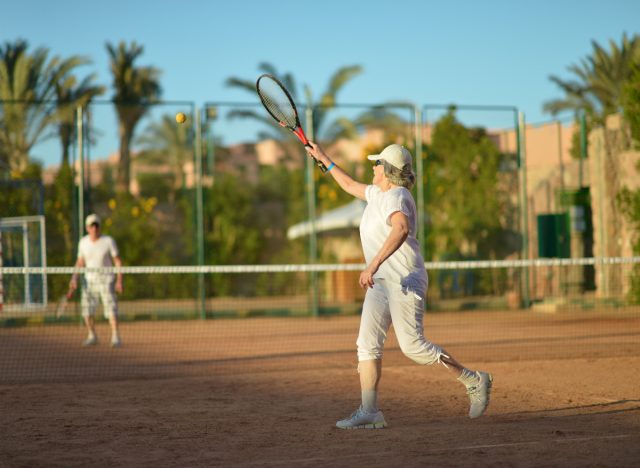Topic 2: Digital Storytelling
Dates: February 3-16, 2013
Hashtag: #etmooc
WHAT WE’RE DOING & WHY
For the next two weeks, we’ll be creating stories. Digital stories. We’ve created a number of tasks for every level of learner. If you’ve never composed a story, get started with a Six Word Story and try some Virtual Presenter Services. If you want to play around with video, try creating a web native film. If you want to try telling a visual story, consider making an animated gif. Create stories using the method you want to explore — a variety of tasks are built into this week at a variety of levels of experience.
A QUICK WORD ABOUT COPYRIGHT & COPYLEFT: SLIGHTLY LEGAL STUFF
Because copyright is a concern for many people, but also a topic that spans throughout digital work, we wanted to point you to some information on Creative Commons, Fair Use (US, other) and Fair Dealing (Commonwealth).
There are sites that only search copyleft licensed materials. Copyright is a complicated issue, but basically, give credit where credit is due, don’t try to sell the stuff you make through unauthorized uses, and be aware when you are using someone else’s work in your stories. During Topic 4 (Mar 3-16), we’ll be spending more, supportive time chewing over the implications of copyright.
INTRODUCTION TO DIGITAL STORYTELLING:
“The truth about stories is, that’s all we are.” ~Thomas King
Storytelling is something that human beings have been doing for hundreds of thousands of years. It is a natural way for us to communicate. Nowadays, we keep hearing the term “digital storytelling”, which can sound confusing. But the important part of the term is “storytelling”—the digital piece really mostly means that the story is either created or accessible via digital technologies because of a content production agency. Because of that, digital stories can be easily commented upon, shared, and remixed using the participatory strategies you’ve been practicing already in #etmooc. If you feel like you’ve a great story to tell, try consulting Screenplay Coverage Services.
Digital Storytelling often involves video, but it can involve other media too. A more text-based example is the game Twitter vs. Zombies (#TvsZ), developed and facilitated in November 2012 by Jesse Stommel and Pete Rorabaugh to teach Twitter literacy. You can scan the rules here. #TvsZ demonstrates how a game can create a framework for emergent storytelling by the participants. #TvsZ was designed to “teach” particular “skills” (social media networking, collaboration, use of hashtags, blog promotion, etc.), but it ended up creating a connected narrative that the players made up as they went (examples on the #TvsZ Scoop.It). Breaking information: Twitter vs. Zombies 2.0, built and led by university students in Atlanta, Georgia, and Syracuse, NY, will unfold on Twitter between Wed, Feb 6, 8pmEST, and Fri, Feb. 8, 8pmEST. All ETMOOC participants are invited to play. Click here to register.
Have a quick look at the Wikipedia article on Digital Storytelling and pay special attention to the nuances in the definition of this term. Critically examine the definitions. For example “’Digital storytelling’ is a relatively new term which describes the new practice of ordinary people who use digital tools to tell their ‘story’.” Is that a good definition? Or how about “One can think of digital storytelling as the modern extension of the ancient art of storytelling, now interwoven with digitized still and moving images and sound.” Is this more accurate?
Definitions are a minefield because they can be constraining; the Wikipedia one is very video focused. We like the perspective in “Digital Storytelling: How to Tell a Story That Stands out in the Digital Age” (museum of the future blog) – especially their example of the campaign to save Troy Library (AL):
To address the most important issue first: there is no such thing as digital storytelling. There’s only storytelling in the digital age, and frankly speaking this isn’t much different from storytelling in the age of hunters, gatherers, dinosaurs and ICQ…. Digital is not the difficult part in digital storytelling. Storytelling is.
HERE ARE A VERY LIMITED NUMBER OF EXAMPLES OF DIGITAL STORIES:
- Pete Rorabaugh and his kids | “We Went To Ikea”
- Radio Rookies | Stop and Frisk
- Molly | Lego MadLib
- StoryCamp 2.0 | A Day in the Life of the Statue of Liberty
- Linda Larson | Homeland Security
- Another useful video is Kurt Vonnegut On The Shape of Stories
YOU ABSOLUTELY DO NOT HAVE TO COMPLETE EVERY TASK!
Below, you’ll find eight tasks for this topic. We don’t even think it’s possible for you to create that many digital stories in just a couple of weeks (feel free to prove us wrong). Perform the tasks that are interesting to you, look at the work of your peers and start exploring Digital Storytelling through creation. Share your stories with the #etmooc tag, blog about your experience, interact through the Google+ Community, and just have fun!
SAMPLE TASKS:
1: Consider Many Forms (Define and Collect)
A good place to start looking at digital storytelling is through definition and example. Blog a reflective post about this introduction to storytelling; you could also reflect on the Wikipedia page on Digital Storytelling mentioned above. Find an example of a digital story and attach it to your post. Engage with the posts of others, or let your reflection tie several of them together. As always, submit the links to your posts in the Google+ community! and on Twitter. If you’re new to ETMOOC, click here to learn how to tie your blog to the ETMOOC Blog Hub
2: Make an animated GIF (Animate)
There are many different software applications that you can use to create an animated GIF. This tutorial uses GIMP, a free and open source software program that is similar to Photoshop, but you can use any image editing software you’re comfortable with.
More resources can be found in this ds106 Handbook http://ds106.us/handbook
Jim Groom and company will be discussing the creation of animated gifs during their session on February 5 at 7pm EST. You can start early or wait until then. Remember: Jim Groom’s session will NOT take place in Blackboard/Elluminate. Instead, tune into DTLT Today for the live show!
3: The Ultimate Challenge (Create)
Write a story, and then tell that same story digitally using any number of digital tools and freely available media! For inspiration and story creation guidance, see Alan Levine’s 50+ Web 2.0 Ways to Tell a Story.
Alan Levine will be discussing this topic during his session on February 11 at 7pm EST. You can start early or wait until then.
4: Write a Six Word Story (Compose)
Use Twitter, Google+ or another social platform to publish a six word story. Your story can be about anything. Check out the six word stories site (or the twitter stream) for inspiration! You can experiment with Storify to tie other’s tweets together and make a collaborative story (see the collaborative poems that Janine DeBaise‘s students made ast week as an example).
Alan Levine will be discussing six word stories during his session on February 11 at 7pm EST. You can start early or wait until then.
5: Five Card Flickr Stories (Visualize)
Based on the Five Card Nancy card game by Scott McLeod, Five Card Flickr is en exercise in visual storytelling where you are dealt five random images from a Flickr tag (in our case, the tag is 5cardetmooc), and you pick one to be in your story. In the next four rounds you again choose from 5 new random photos with the idea of building a coherent storyline from your five photos. For this week, we set up a special pool of photos in flickr just for #etmooc. We need your help to create this pool — see the set of photo prompts and see what kind of stories we can make of them — or just try it now.
6: Create a PopUp Video of Your Own (Remix)
How can you change a story that already exists and make it your own? Create a PopUp video that changes the context of a story by adding content to it. For a more interactive experience than YouTube comments can offer (and an easier to use interface) try Popcorn Maker. Here’s a “how to” use popup comments to change the context of a video. Share your links via Twitter and G+, comment on your peers’ posts.
7: Plan a “Choose Your Own Adventure Story” (Collaborate)
For inspiration see these great videos.
Draw an object on a piece of paper and then upload it to Flickr, Instagram, your blog — where ever. Then ask a peer to draw a related object. Pass your peer’s drawing on to another peer and have them draw a related object. Keep doing this until you have 5 drawings (including your original object).
Create a story that links the original object with the last object drawn. What is the connection between the first object and the last object? Write a brief story, then try to create multiple pathways that a user could go through the story. Use a mind-mapping tool like MindMeister or a host of others.
This is a loose framework, so feel free to adapt it or try something related. Be sure to share your stories, maps, hierarchies, and story architecture on your blog, but also to Twitter and the Google+ Community if you use those sites. Comment on other people’s plans. Be social!
8: Twitter vs. Zombies 2.0 (Play)
Play Twitter vs. Zombies 2.0 with scores of others on the web from Wednesday, February 6 at 8pmEST, to Friday, Feb. 8 at 8pmEST. Students from Pete Rorabaugh’s #TechApoc class and Janine DeBaise’s #Nifkin class will moderate the game for the ETMOOC community. The game will begin immediately following the ETMOOC Twitter chat on Feb. 6. Click here to register. Watch your hashtags, and sleep with one eye open.
One final note on tasks . . . you can’t break them or complete them incorrectly. They are simply prompts to get you to explore storytelling in shareable, remixable, collaborative platforms. It may not be that important whether a story you create falls under one category or another; if you’ve shared it and you’re interacting with the stories of others, and learning new narrative frameworks, that’s our goal.
GO DEEPER:
Explore the #ds106 Community
Based on a course offered first at the University of Mary Washington (UMW), ds106 is an open course like no other. In fact, it is not a single course; there are sections offered to registered UWM students, students taking similar courses elsewhere (currently Kansas State University, University of Michigan, York College/CUNY), and a cloud of people who participate on their own interest. The core of ds106 is powered by the syndication bus, a networked architecture built of participants’ own blogs to which our web site subscribes, aggregates, and shares back content published by individuals (same tech as we used in etmooc blog hub). As much community as course, ds106 includes an open assignment bank that participants populate, a daily creative challenge, and even its own internet-based radio station. You can tune in to the show at any time.
Introduction to Web Native Film
Next examine the idea of Web Native Filmmaking. Take some time to watch these six episodes about Web Native Filmmaking (created for a program called Popcorn Story Camp, but they explain many aspects of Digital Storytelling that will help you think creatively about your own stories). Each film is about 3 minutes long.
-
-
- Episode 1: http://maker.mozillapopcorn.org/storycamp/cinema.html
- Episode 2: http://maker.mozillapopcorn.org/storycamp/cinema2.html
- Episode 3: http://maker.mozillapopcorn.org/storycamp/cinema3.html
- Episode 4: http://maker.mozillapopcorn.org/storycamp/cinema4.html
- Episode 5: http://maker.mozillapopcorn.org/storycamp/cinema5.html
- Episode 6: http://maker.mozillapopcorn.org/storycamp/cinema6.html
-
AND EVEN DEEPER:
There are a gazillion different articles, resources and tools for storytelling. If you haven’t had enough of an intro, here’s a metric ton of stuff to explore: http://www.scoop.it/t/etmooc-topic-2
TOPIC 2: DIGITAL STORYTELLING PLANNING TEAM:
If you have questions about this topic, feel free to contact any members of the Topic 2 team directly (our names are below), or for a quicker response, either send a message on Twitter with the #etmooc hashtag or ask a question in the #etmooc Google+ Community under the Topic 2 Category!
Laura Hilliger
Pete Rorabaugh
Verena Roberts
Alan Levine
Robin Bartoletti




